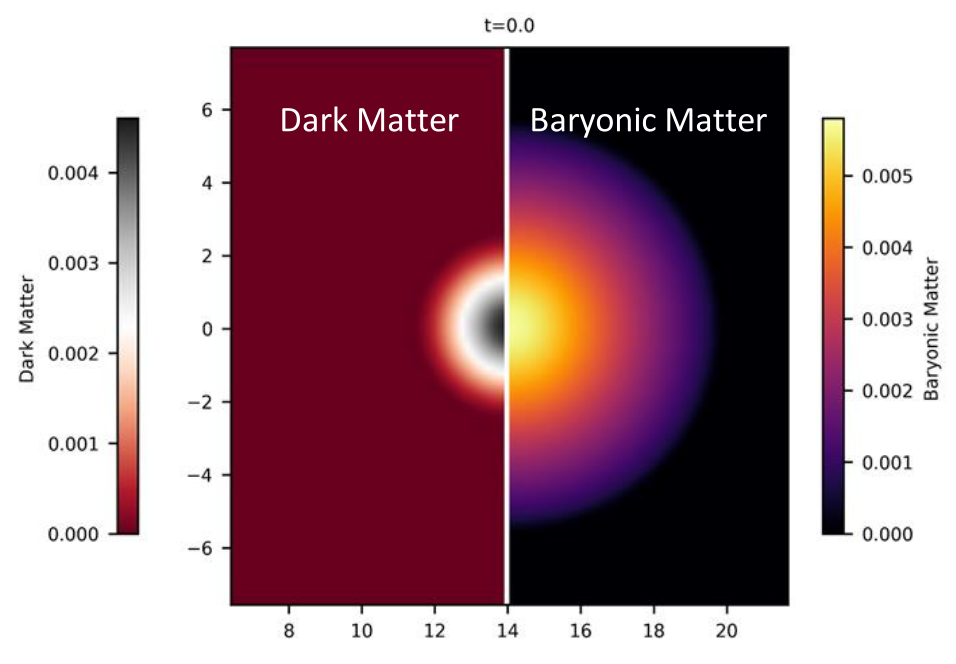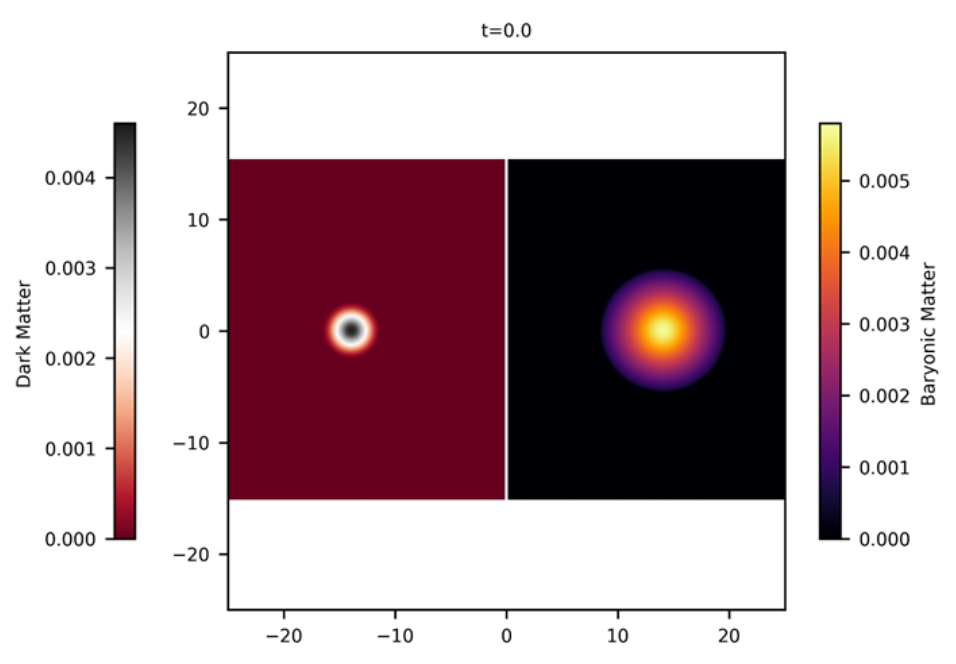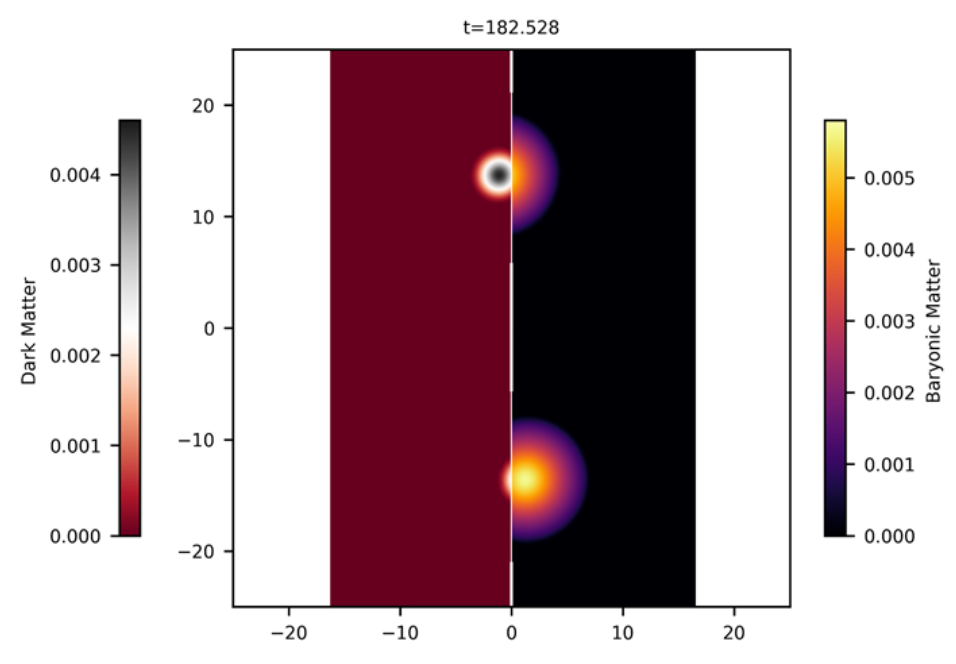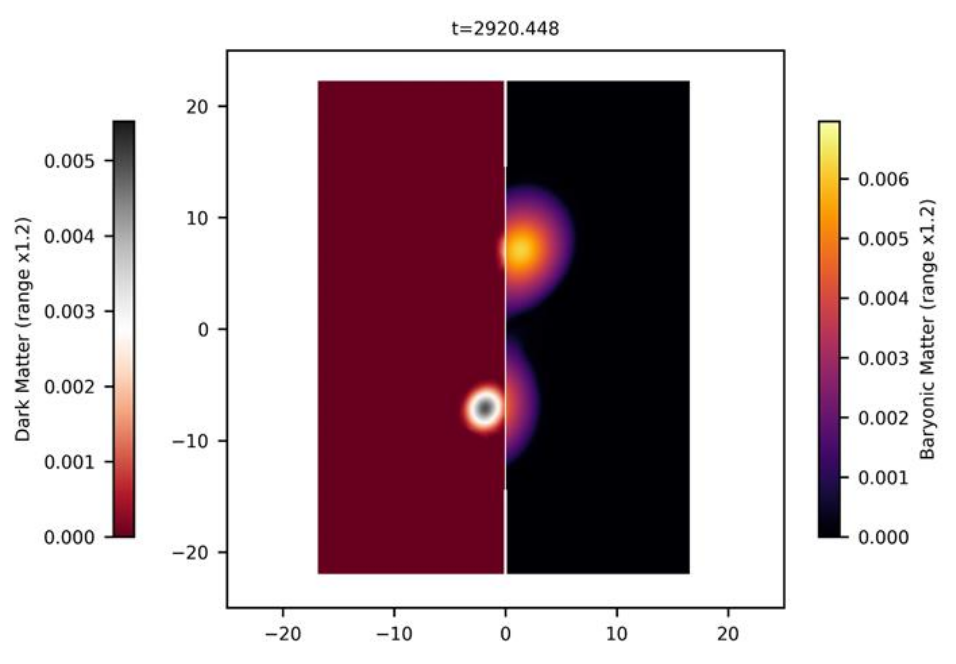Simulating dark matter admixed neutron stars
One of the demands from the gravitational wave (GW) observations is to explore new physics and either confirm or dis prove them via the observations, which increases our understanding of the fundamental nature of the universe. One such aspect is considering dark matter (DM) admixed neutron stars (NSs). The effect of DM admixed with baryonic matter (BM) on GW signals has been demonstrated in. As such, I am currently simulating constraint-solved, quasi-equilibrium initial data configurations of equal mass binary neutron star (BNS) systems with a DM core generated by the Sgrid initial data code. The DM core is modeled with 1000 MeV mass Fermi gas particles, picture of which is shown in figure 1.

We also add independent initial spins to the BM and DM, with the spin oriented perpendicular to the orbital plane. In this implementation, the DM and BM interact only gravitationally. We also create initial data for a single NS with dissimilar spins for the two fluids. We are currently evolving these BNS and single NS initial data with the BAM code. Snapshots of the densities of Dm and BM can be seen in the figures below.



We hope to discern insight into the effect of independently spinning DM core on the GW signal and matter behavior, such as fluid spin interactions, etc., through these simulations.
Related publication: arXiv:2502.07204, more in preparation.
Related presentations: APS April 2024.
Project personnel: A. Adhikari, F. Herschelman, E. Giangrandi, H. Rüter, W. Tichy, T. Dietrich, V. Sagun.